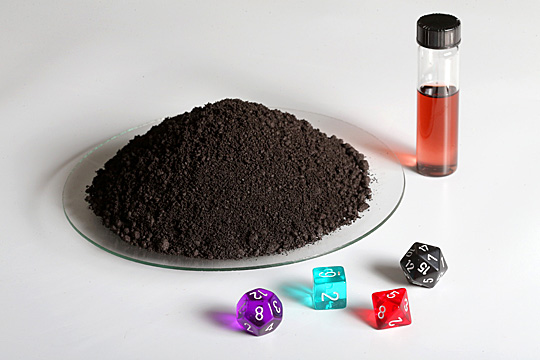UT scientists’ work on nanoparticles published in Nature
September 23rd, 2013 by Meghan CunninghamMixing chemicals together causes reactions that form new substances and molecules; basic science 101.
Developing specific groups of very stable, very consistent, and very valuable molecules — called nanoparticles — well, it takes quite a bit more expertise.?

A group of researchers led by The University of Toledo and Dr. Terry Bigioni, UT associate professor of chemistry, have created ultra-stable nanoparticles using silver atoms, making them far less expensive to create — most stable nanoparticles use gold atoms — and far more abundant.
The discovery was published recently in the scientific journal Nature.
Nanoparticles, Bigioni explained, are used in the medical world for the targeted drug delivery that makes up an increasing component of individualized medicine tailored to the needs of each patient. Silver has long been used for its antibacterial properties in medical applications and recently applied to fighting cancer.
“We’ve created stable silver nanoparticles in massive quantities and in a very pure form, using a less expensive substance than some of the traditional methods using gold,” Bigioni said. “Their purity is a huge advantage for biomedical applications.”
Bigioni said the substance, M4Ag44(p-MBA)30, consists of a cage or shell of protective molecules around a central core of silver atoms, which prevents the silver from oxidizing.
“Anyone familiar with silver utensils or dishes knows they tarnish, they rust. By creating this interlocking framework, we are able to stabilize the silver atoms and create a nanoparticle that we think can be used for a wide variety of purposes,” he said.
Bigioni pointed to his collaborations with photovoltaics experts at UT. M4Ag44(p-MBA)30 can be used as a dye applied to a solar panel substrate and is 10 times more light absorbent than dyes currently available.
“You can take eighty dollars’ worth of silver and turn it into thousands and thousands of dollars’ worth of dyes for solar panels,” Bigioni said, noting that he already has commercialization efforts under way.
Dr. Karen Bjorkman, dean of the College of Natural Sciences and Mathematics, praised the work of Bigioni and his team.
“The publication of this work in one of the premier scientific journals in the world speaks volumes about the caliber of people and the quality of the research happening at UT and in the natural sciences,” Bjorkman said.
“Terry is an outstanding chemist and a wonderful teacher for our those students who are helping him advance science in a way that will have tangible and profoundly positive results for people around the world.”
Tags: College of Natural Sciences and Mathematics
Meghan Cunningham is
UT's Director of University Communications. Contact her at 419.530.2410 or meghan.cunningham@utoledo.edu.
Email this author | All posts by
Meghan Cunningham

